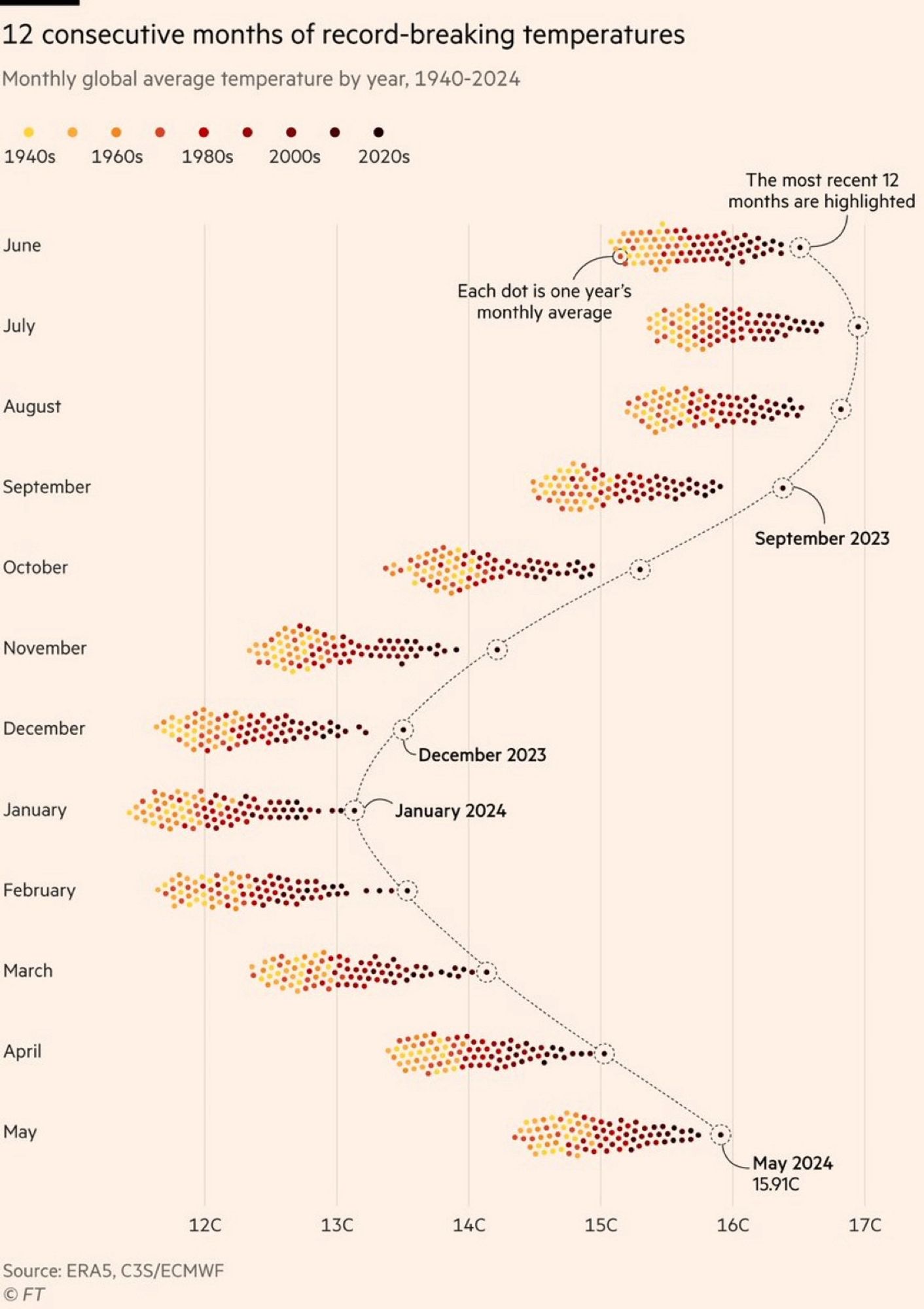this post was submitted on 08 Jun 2024
932 points (99.2% liked)
Data Is Beautiful
7797 readers
5 users here now
A place to share and discuss data visualizations. #dataviz
founded 4 years ago
MODERATORS
you are viewing a single comment's thread
view the rest of the comments
view the rest of the comments

Why does it seem like this is only the northern hemisphere and not truly "global"? Shouldn't it be warm in the southern hemisphere when it's cold in the north? So shouldn't these groupings generally hover around an average between northern and southern hemisphere temps?
Because the northern hemisphere is mostly land mass and the southern hemisphere is mostly ocean. Land heats faster and cools faster than ocean, thus the seasonal effects are more pronounced in the data.
Same with CO2 patterns which gives a similar yearly 'breathing effect'
What's your source that there's not warming in the southern hemisphere?
The temperature readings would look different because winter and summer are flipped, but they absolutely should be attributing a similar effect.
That's what I thought... But if it's winter in the north then it's summer in the south, so you'd expect them to average in a way that you wouldn't see such stark differences between say January and July. In July it's winter in the south, summer in the north. Intuitively I'd assume they'd average. Temps would still be rising year over year, but you wouldn't see a difference between months. A couple people have answered that it has to do with the earths tilt and the fact that there's more landmass in the north. Seems plausible I guess.
Huh... So it does. Interesting.
The way earth rotate around the sun is not a perfect circle, but more like an ellipse, that plus the earth rotational axis makes the summers and winters of the global north and south don't correspond exactly. This is why there's a difference of ~4 Celsius between average January vs average July.